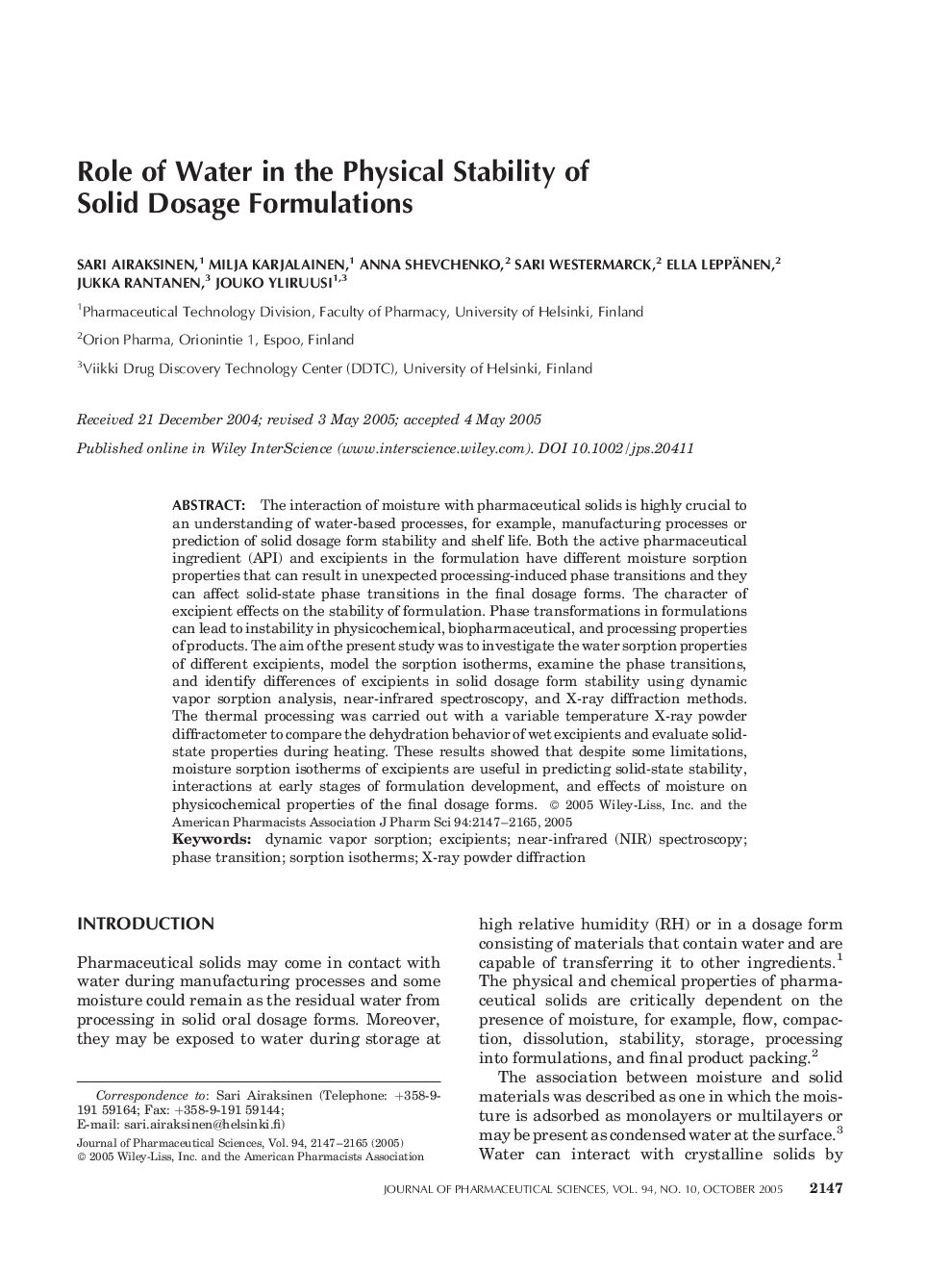| Article ID | Journal | Published Year | Pages | File Type |
|---|---|---|---|---|
| 2486515 | Journal of Pharmaceutical Sciences | 2005 | 19 Pages |
Abstract
The interaction of moisture with pharmaceutical solids is highly crucial to an understanding of water-based processes, for example, manufacturing processes or prediction of solid dosage form stability and shelf life. Both the active pharmaceutical ingredient (API) and excipients in the formulation have different moisture sorption properties that can result in unexpected processing-induced phase transitions and they can affect solid-state phase transitions in the final dosage forms. The character of excipient effects on the stability of formulation. Phase transformations in formulations can lead to instability in physicochemical, biopharmaceutical, and processing properties of products. The aim of the present study was to investigate the water sorption properties of different excipients, model the sorption isotherms, examine the phase transitions, and identify differences of excipients in solid dosage form stability using dynamic vapor sorption analysis, near-infrared spectroscopy, and X-ray diffraction methods. The thermal processing was carried out with a variable temperature X-ray powder diffractometer to compare the dehydration behavior of wet excipients and evaluate solid-state properties during heating. These results showed that despite some limitations, moisture sorption isotherms of excipients are useful in predicting solid-state stability, interactions at early stages of formulation development, and effects of moisture on physicochemical properties of the final dosage forms. © 2005 Wiley-Liss, Inc. and the American Pharmacists Association
Keywords
Related Topics
Health Sciences
Pharmacology, Toxicology and Pharmaceutical Science
Drug Discovery
Authors
Sari Airaksinen, Milja Karjalainen, Anna Shevchenko, Sari Westermarck, Ella Leppänen, Jukka Rantanen, Jouko Yliruusi,
